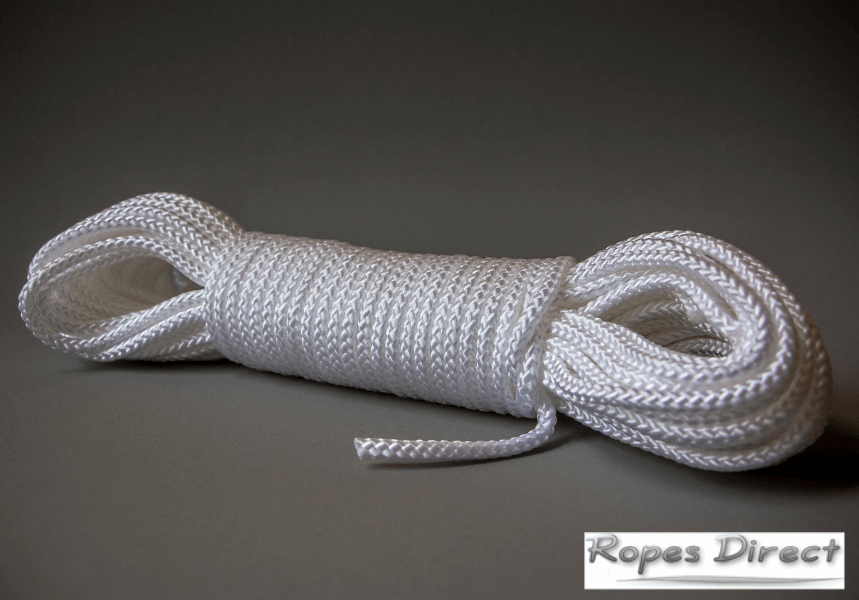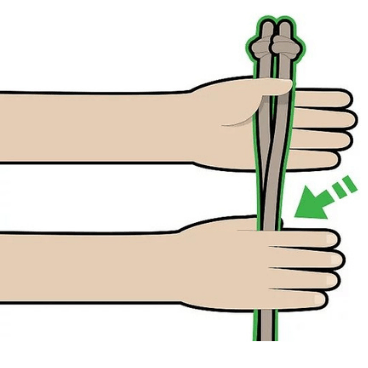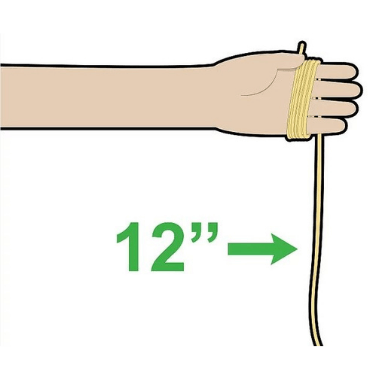Not using your ropes at the moment?
It’s important that you store them correctly. Not only will this keep them neat, tidy, and tangle-free, it can also help to maintain the rope’s overall quality. And here we take a look at a couple of the easiest and most effective rope storage methods.
Quick and easy rope storage methods
Method 1 – The Figure 8
- Take hold of the rope
Hold both ends of the rope with your non-dominant hand – positioning them between your thumb and index finger. Hold them at the same height, allowing the rest of the rope to hang down to the ground. Then, grab the hanging rope with your dominant hand.
At this stage, your hands should be approximately 0.3m apart. You should also try to keep them as flat as possible, rather than curling them up into a fist.
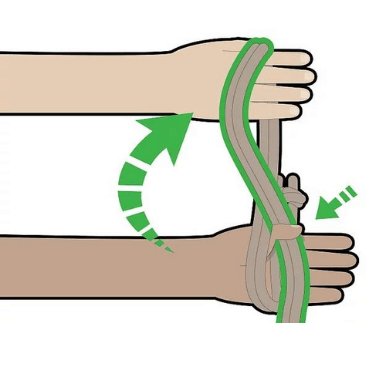
- Create the figure of 8
To tie the rope, start by lifting your dominant hand above your non-dominant hand. Move slowly, taking care not to lose control of the rope or let it get too loose, and catch the dangling rope in your non-dominant hand. At this point, you should see your first figure of 8.
Next, lift your non-dominant hand above your dominant hand and repeat the process outlined above – catching the excess rope between your thumb and index finger. Continue alternating hands until around 0.5m is left.
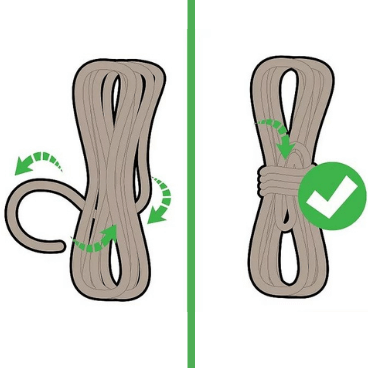
- Wrap the remaining rope
Finally, to secure the rope in a bundle, grab the middle of the tied rope with your non-dominant hand – and tightly wrap the excess around the centre.
When approximately 30cm is remaining, fold the end of the rope into a loop and tuck it under the wrapped rope. Then, simply pull the loop down to tighten the bundle and ensure everything stays in place.
Method 2 – Coiling the rope
- Coil the rope
To store rope in a coil, start by wrapping it repeatedly around your hand. This will create a neat bundle.
If your rope is particularly thick, hold your arm in an ‘L’ shape, so that your bicep is parallel to the ground and your forearm is pointing upwards. Wrap the rope around your hand and elbow to create each loop.
Either way, you should aim to stop coiling when approximately 30cm (12”) of rope is left. This doesn’t have to be exact, but try to get as close as you can.
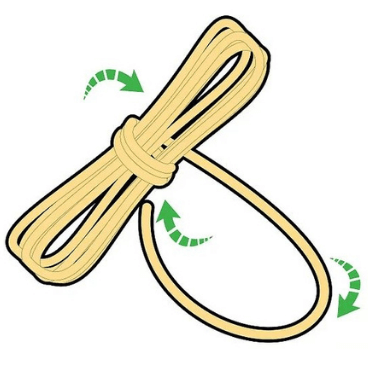
- Wrap the excess
The next step is to secure the bundle.
Carefully take the coil off your hand – ensuring that it doesn’t unravel in the process – and hold it together in the middle. Wrap the excess rope tightly around the centre, until a small amount is left at the end.
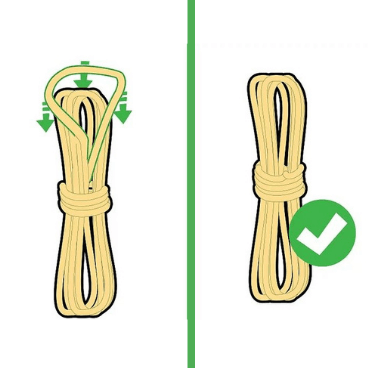
- Secure it in place
Make a loop at the end of the rope and thread it through one side of the bundle. Then, bring this loop over the top of the bundle and slowly slide it down to the centre. Here it will join the rest of the excess rope, where it was previously wrapped around the centre of the coil.
Last but not least, to ensure everything is tidy and compact, pull the tail end of the rope as tightly as possible.
A few rope storage tips to keep in mind
Both of the rope storage methods outlined above will prevent tangles and keep the rope from unravelling. But to ensure your rope stays in the best possible condition, there are a couple of additional things you need to think about.
Firstly, is your rope clean? Dirt and salt can damage the fibres over time. So if your rope is looking a little grubby, it’s a good idea to rinse it with soap and fresh water before you store it away. You should also air-dry it completely by leaving it in a spot that is out of direct sunlight.
Secondly, be sure to store the rope in a cool, dry, and dark location. Ideally, lay it flat inside a tote bag or container, or hang it on a hook in your garage or shed. This will keep it off the ground – away from dirt, chemicals and moisture – and will help to prevent unnecessary damage from UV radiation.
Get in touch with our experts for further guidance
With huge levels of stock in our warehouse and many years’ experience in this area, it’s fair to say, we’re experts in effective rope storage here at RopesDirect. And we’re always happy to help. If you have any questions, or would like further guidance on how to store rope correctly, you’re welcome to get in touch at any time. Send an email to info@ropesdirect.co.uk and we’ll get back to you as soon as we can.
Images courtesy of: https://www.wikihow.com/

